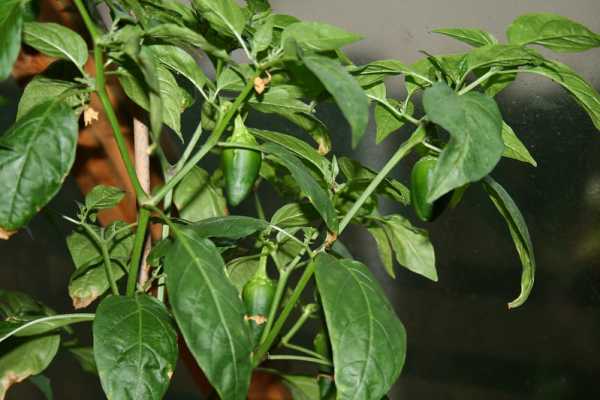Growing a pepper plant at home is not easy, but definitely a beneficial bet. If you are developing a Pepper plant all by yourself, then you would be well-versed with the difficulties that it invites. The most common being the continuous presence of a hole in pepper plant leaves.
Holes in pepper plant leaves indicate the damage that has been incurred by dangerous pests and insects. If you have found such damage being done to your plant, then you are in the right place.
In the preceding article, we would be raising questions regarding the causes and preventive measures that are required to be taken in case of pests attacks. So, without further ado, let us begin our quest.
What causes holes in pepper plant leaves?

If you are growing pepper plants in your garden or backyard, you must be faced with the possible question of “why are there holes in my pepper plant leaves?”
Well, you do not need to ask this question anymore. We will not only tell you what causes these holes but will also provide you with all the possible treatment methods so that your plants remain healthy ever after.
Also Read: Does Swiss Chard Grow Back After Cutting?
Cutworms
Cutworms are the most probable source of holes in your young pepper plants. Extremely young pepper plants attract cutworms, and that is why they attack these plants to do the damage.
Often, they go for pepper plant seedlings and attack them to weaken the core of your plant before the plant starts bearing fruits.
Aphids
Aphids do not only like feeding on pepper plants but also love feeding on almost all the vegetable plants. That is why they have been cited as the most dangerous insects for the kingdom of vegetable plants.
They attack the bottom-most sap of the plant by sucking onto them. So, in addition to holes, your pepper plant leaves will also show signs of wilting, yellowing, and dying. The solution to this source of massive damage is mentioned in the next section.
Flea beetles
Just like cutworms, flea beetles are also a fan of young pepper plants. That is why immature pepper plants demand and expect more attention than fully grown plants. In addition, flea beetles are known to leave tiny holes on the leaves of numerous pepper plants.
Their jumpy nature adds to the ease of moving from one plant to another.
Also Read: How to Grow Pointed Gourds at Home?
Corn Borers
Pepper plant pods are the main attack targets of corn borers. The leaves of pepper plants do not seem to attract them as such. Instead, they start attacking the plant by affecting the inside of the plant pods. In no time, the damage spreads to others pepper plants in your garden as well.
These caterpillar-like insects can be easily spotted and treated.
Other Pests
The aforementioned pests are primarily the reason behind recurring holes in the leaves of your pepper plant.
However, these are not the only ones to blame. Insects like leafcutters, tomato hornworms, moths, beet armyworms, butterfly larvae, grasshoppers, slugs, and snails are also dangerous to the progress of your pepper plants.
To identify these pests, you should arrange regular visits to your garden. Check and examine your pepper plant for any trail, holes, or damage everywhere.
The evidence can be observed under the leaves, on the leaves, on the stem, around the stem, on the soil, or on the ground surrounding the plant.
Also Read: How to Grow Chinese Cabbage from Cuttings?
How to Prevent Holes In Pepper Plant Leaves?
Since the only reason for holes in pepper plant leaves is the presence of pests, the preventive and treatment strategy also revolves around the same issue, that is, getting to remove them.
In the following sections, we will look at some pest-specific strategies that would essentially draw them away. This will be followed by tips that are generally helpful in finishing and repelling all kinds of pests.
Treat plants according to the type of pests.
Each pest has its own requirement regarding food, nutrition, and energy, and that is what makes it essentially different from other pests. Therefore, if we wish to target specific pests, then we need to adopt particular strategies.
The pests we mentioned above can be derailed from entering the garden spaces by following the practices listed below.
It is suggested that the steps are followed as they are listed, without any deviation in the methods.
Cutworms
As we have noted above, cutworms attack the seedlings of pepper plants. So, if you direct seed your plants to grow them, it would enhance the chances of cutworms attacking your plant. But, if possible, skip this method and go for something else.
However, if cutworms are troubling your pepper plants, a naturally made pesticide would be acceptable to keep them away from your plant.
The process would be more endearing if the worms are spotted as soon as they begin to thrive.
Aphids
Aphids are another dangerous source of destruction to pepper plants. However, there is not much that you need to do to drive away these pests.
You can use the most straightforward method involving water. Wash the affected part, and the aphids will go away. To some, this may seem a bit time-consuming. Nevertheless, it is effective.
You can also use natural pesticides to kill them off as an alternative to washing away with water.
Flea Beetles
Flea beetles are the easiest pest to identify; they keep flying all the time, complemented by their jumpy nature.
The solution is very easy. All you need is a potent mixture of water and soap in a spray bottle. Spray the plants thoroughly.
When your plant is ready to harvest, wash them and rinse them off any dish soap for making them edible to human beings.
Corn Borers
It would be easier to get rid of corn borers if we identify them in the earlier stage of damage and try to draw them away. Ladybugs are a natural solution to this problem of perpetuating corn borers from your garden.
Find a way to attract ladybugs to your garden. Next, try to place them near the pepper plants. Ladybugs feed on the eggs of corn borers, thus stopping their breeding process.
If this method does not work, wear your sturdy gardening gloves and try removing these pests from your hands.
For better results, you can supplement these ideas with a non-toxic pesticide.
Also Read: Coffee Grounds for Pothos
Additional tips: for unknown pests
Apart from what we have mentioned above, there are a lot of other considerations that need to be taken.
This is a specific matter of fact when one is not able to identify the pests they have on their pepper plant leaves.
That’s right! If you feel that identifying the right kind of pest is a hassle, then you can shift to adopting additional tips, which usually work with each kind of pepper plant pests.
This way, you can make sure that your leaves remain hole-free and undamaged for more extended periods.
Follow the below-given tips to enjoy a hassle-free pepper gardening process:
Ducks or chicken can be of specific help.
Keeping ducks and chicken in the garden where you are growing pepper plants is beneficial to the leaves, as they help finish the pests that feed on pepper plants by feeding on them.
Since the pests act as a source of food and nutrition to the poultry animals, they will hunt for them and finish them off before they create any undue damage or harm.
Maintaining cleanliness
In order to prevent the lingering of pests in your garden, analyze the area around your pepper plants and keep them effectively clean. In order to clean the area, begin by maintaining a fixed schedule.
Next, surf through different stores and select the best cleansing agent for this purpose. Begin by removing tall grass and unwanted crops (weeds). Uncleanliness is the main reason that pests are attracted to your garden.
Which plants to keep at bay?
If peppers are kept near certain plants, it can be a hazard for their leaves. Plants like garlic, onion, alfalfa, melons, and sugar beets attract insects and pests like thrips, leafrollers, and whiteflies.
If these plants are kept near pepper plants, pests can quickly attack their leaves, causing giant holes in them.
Deploying cardboard collars
If the problem of pepper plant leaf holes is troubling you to the core, then perhaps you would be willing to take out some additional time for deploying cardboard collars, which are essentially stiff, next to your pepper plant base.
This way, if cutworms plan to attack your pepper plants, they would fail, owing to the preventive shield created by deploying stiff cardboard collars.
Silver Mulching
Silver mulch repels pests and insects of all sorts, whiteflies the most. Therefore, if you have trouble surrounding them, find silver mulch from an authentic commercial store, and spread it evenly across the boundaries of your plant.
This is a tested and reliable method for driving away pests. Besides, it would also create a nutritious ground for your pepper plants to thrive.
Spreading diatomaceous earth
Diatomaceous earth is a mixture that is essentially known to keep away insects of all kinds. In fact, it was earlier used on a regular basis as an insect repellant. It helps in killing insects, which can be harmful to the health of your plant.
If you cannot find the original mix of diatomaceous earth, do not worry! You can spread the food-grade diatomaceous earth type instead.
It is also suitable for the health of your leaves and provides a fertile ground for plants to grow. However, take special care during the monsoon season or when it starts to rain. This is because, under such circumstances, the mixture tends to wash away with water.
Wait for the rain to stop and reapply it again after some time.
Turmeric
The most straightforward home remedy for treating pests is turmeric. First, take some turmeric and mix it with water. Then, put it in a spray bottle. Shake the bottle. And your spray is ready!
Use this solution to treat your plants. Spray it on your plants twice a day for best results. Garden bugs and pests find it hard to resist the smell and properties of turmeric, so it keeps them away.
Conclusion
One does not need to be a gardening guru or an agricultural expert to fight back the harmful pests, which are a serious source of threat to pepper plants.
As we have seen above, whether or not you know about the exact worms that have attacked your plants and caused holes in their leaves, you can treat them and prevent them from returning next time.
Pests like cutworms and flea beetles are the most common causes of visibly large holes in your pepper plant leaves. However, it is never too challenging to grow your own pepper plant crop in a backyard or garden.
If you witness holes in the leaves of your pepper plants even after administering the treatment, as mentioned earlier, consult a professional, a gardener, or an experienced botanist.
